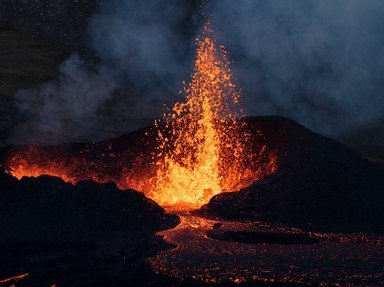Quiz Answer Key and Fun Facts
1. At 8:32 a.m. on May 18, 1980 Mount St. Helens erupted. Who sent the message 'Vancouver! Vancouver! This is it'?
2. Despite literally blowing its top and the amount of damage that was caused, a surprisingly small number of people were killed. How many lost their lives?
3. The devastation caused by the blast was immense. Which of the following was noticed in areas furthest from Mount St. Helens?
4. Until St. Helens, most volcanic activity in the U.S. had been restricted to Hawaii. Based on the data geologists had available, which of their conclusions was shown by the eruption of Mount St. Helens to be inaccurate?
5. When Mount St. Helens exploded it was with a force of incredible magnitude. It has been compared to a number of Hiroshima-sized bombs. How many?
6. It was an incredible blast that obliterated the peak of the mountain, some 1,300 ft of it, leaving a once symmetrical volcano with a huge crater. How did one eyewitness describe the sound?
7. Despite being 80 miles away, the blast did not go unnoticed by the residents of Yakima, Washington. Which of these was used to describe the effect of the eruption?
8. Volcanoes are unpredictable. Even if geologists had been sure of the exact time and date of the eruption no-one could have stopped the fiery fury that St. Helens unleashed. What was President Jimmy Carter's reaction to the devastation?
9. The blast on May 18 brought new knowledge about atypical volcanic eruptions. Despite the magnitude of the blast and the damage it caused, St. Helens pales in comparison to two earlier eruptions. Which were they?
10. One person who witnessed the event first-hand said that he would rather die than see his beautiful mountain blasted into an ugly shell of itself. Who said this?
Source: Author
little_plum
This quiz was reviewed by FunTrivia editor
bloomsby before going online.
Any errors found in FunTrivia content are routinely corrected through our feedback system.
